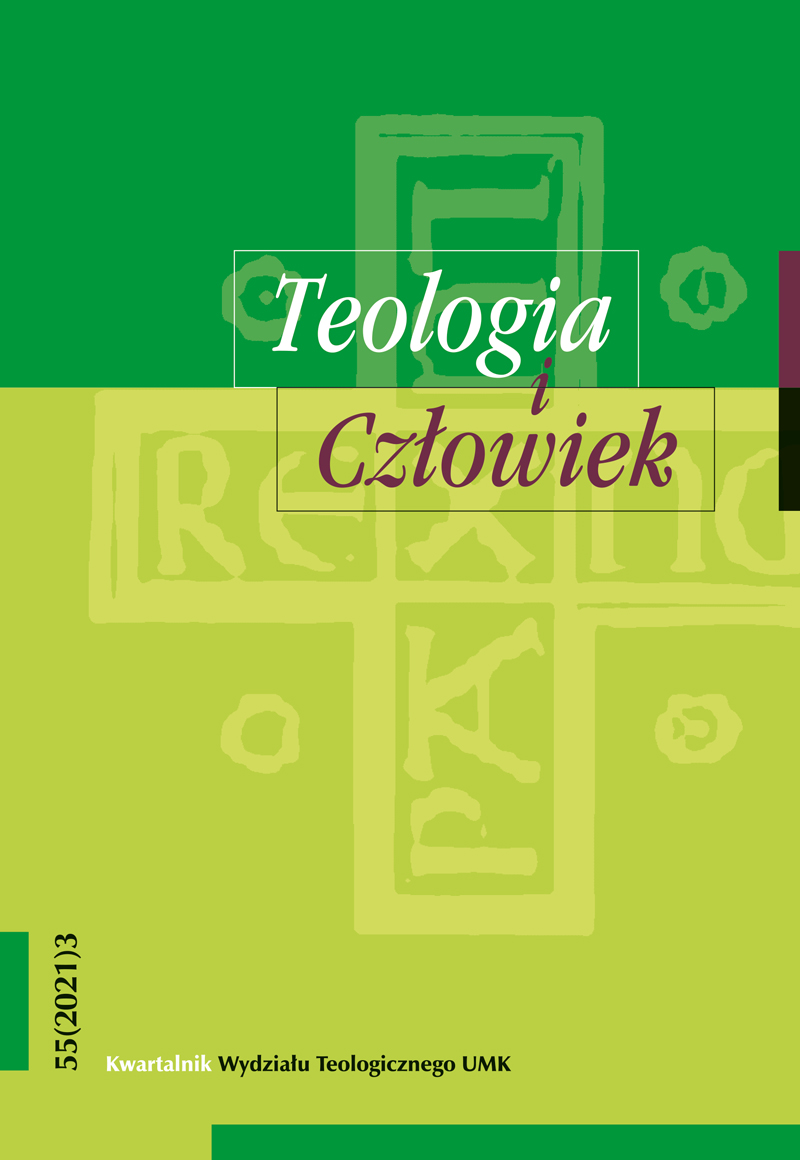Rites of Reception into a Community of Monks according to the Tyniec Ceremonial of the 18th Century and the Instructions of St. Benedict of Nursia
DOI:
https://doi.org/10.12775/TiCz.2021.020Keywords
religious liturgy, monastic profession, Rule of Saint BenedictAbstract
In his rule, St. Benedict of Nursia left guidelines for the admission of brothers and the profession of monks. Since the 8th century, these guidelines have been enriched with numerous rituals, prayers and gestures illustrating the meaning of the monastic profession. An example of this are the rites set out in the 18th-century Tyniec Ceremonial used by the Congregation of the Holy Cross in Poland. These include rites celebrated for admission to the novitiate; rites for religious vows, both solemn and simple; and inclusion into full communion with the professed brothers. An important element of the monastic profession was the reading of the document with an oath, signing it with the sign of the cross, and placing it on the altar. A sign of dedication to the service of God was the singing of the verse “Sustain me by your promise that I may live; do not disappoint me in my hope!” (Ps. 119[118]:116) accompanied by gestures showing the complete dedication of the newly professed to God. An unknown rite of the Benedictine Rule was that of full inclusion into the community three days after the vows were made. The Tyniec Ceremonial is a valuable source for learning about the liturgy of the Benedictines in Poland in the 18th and early 19th centuries.
References
Św. Benedykt z Nursji, Reguła, Tyniec 1994.
Boguniowski J. W., Rozwój historyczny ksiąg liturgii rzymskiej do Soboru Trydenckiego i ich recepcja w Polsce, Kraków 2001.
Casel O., Mönchtum und Pneuma, w: P. Krüger, J. Tyciak (Hrsg.), Morgenländisches Christentum. Wege zu einer ökumenischen Theologie, Paderborn 1940/44, s. 228-246.
Coeremoniale Monasticum pro Inclyta Congregatione Benedictino-Polona Sub Titulo SS. Crucis Accommodatum, Jussu & Auctoritate Capituli Generalis In Monasterio Tynecensi Celebrati Editum, Omnibus vero Monasteriis dictae Congregationis Pro Methodo In Ecclesiasticis, et Monasticis functionibus, servanda porrectum, Anno Quo, per Verbum Incarnatum facta est. haeC MVtatIo DeXterae eXCeLsI. Psal: 76. v. 10. Calissii, Typis Sacrae Regiae Majestatis et Rei-Publicae.
Congar Y., Wierzę w Ducha Świętego, t. I, Warszawa 1995.
Estreicher K., Bibliografia Polska, t. 20, Kraków 1905.
Happle B., Die Profeßordnung des 58. Kapitels der Benediktinerregel, BM 31 (1955), s. 9-22, 101-116.
Hiżycki Sz., Kiedy mnisi zaczęli siedzieć w celi?, „Cenobium” 23 (2016), s. 25-39.
Jüngling H.-W., Księga Psalmów, w: W.R. Farmer (red.), Międzynarodowy komentarz do Pisma Świętego, Warszawa 2001, s. 692-765.
Kanior M., Polska kongregacja benedyktyńska św. Krzyża 1709-1864, Kraków 2000.
Krakowiak Cz., Tonsura, EK 19, kol. 891-892.
Leclerq J., Pochwała stałości, „Cenobium” 23 (2016), s. 11-24.
MacDonald M. Y., List do Efezjan, w: W. R. Farmer (red.), Międzynarodowy komentarz do Pisma Świętego, Warszawa 2001, s. 1515-1529.
Martimort A.G., Handbuch der Liturgiewissenschaft, t. II, Freiburg im Breisgau 1965.
Nadolski B., Liturgika, t. III, Poznań 1992.
Puzicha M., Kommentar zur Benediktusregel, St. Ottilien 2002.
Rollin B., Jak żyć dzisiaj Regułą św. Benedykta. Komentarz do Reguły, Kraków 2005.
Rothenhäusler M., Die Anfänge der klösterlichen Profess, BM 4 (1922), s. 21-28.
Rothenhäusler M., Unter dem Geheimnis des Kreuzes. Die klösterliche Profess bei Kassian, BM 5 (1923), s. 91-96.
Sczaniecki P., Benedyktyni, w: Zakony benedyktyńskie w Polsce. Krótka historia, Tyniec 1981, s. 39-77.
Straszewicz M., Veni, creator Spiritus, EK 20, kol. 42-43.
De Vogüé A., Jak formować do stałości?, „Cenobium” 23 (2016), s. 77-86.
De Vogüé A., La comunità ordinamento e spiritualità, Praglia 1991.
Zatorski W., Stałość w „Regule” św. Benedykta, „Cenobium” 23 (2016), s. 41-49.
Downloads
Published
How to Cite
Issue
Section
License
Copyright (c) 2021 Theology and Man

This work is licensed under a Creative Commons Attribution-NoDerivatives 4.0 International License.
CC BY ND 4.0. The Creator/Contributor is the Licensor, who grants the Licensee a non-exclusive license to use the Work on the fields indicated in the License Agreement.
- The Licensor grants the Licensee a non-exclusive license to use the Work/related rights item specified in § 1 within the following fields: a) recording of Work/related rights item; b) reproduction (multiplication) of Work/related rights item in print and digital technology (e-book, audiobook); c) placing the copies of the multiplied Work/related rights item on the market; d) entering the Work/related rights item to computer memory; e) distribution of the work in electronic version in the open access form on the basis of Creative Commons license (CC BY-ND 3.0) via the digital platform of the Nicolaus Copernicus University Press and file repository of the Nicolaus Copernicus University.
- Usage of the recorded Work by the Licensee within the above fields is not restricted by time, numbers or territory.
- The Licensor grants the license for the Work/related rights item to the Licensee free of charge and for an unspecified period of time.
FULL TEXT License Agreement
Stats
Number of views and downloads: 575
Number of citations: 0



